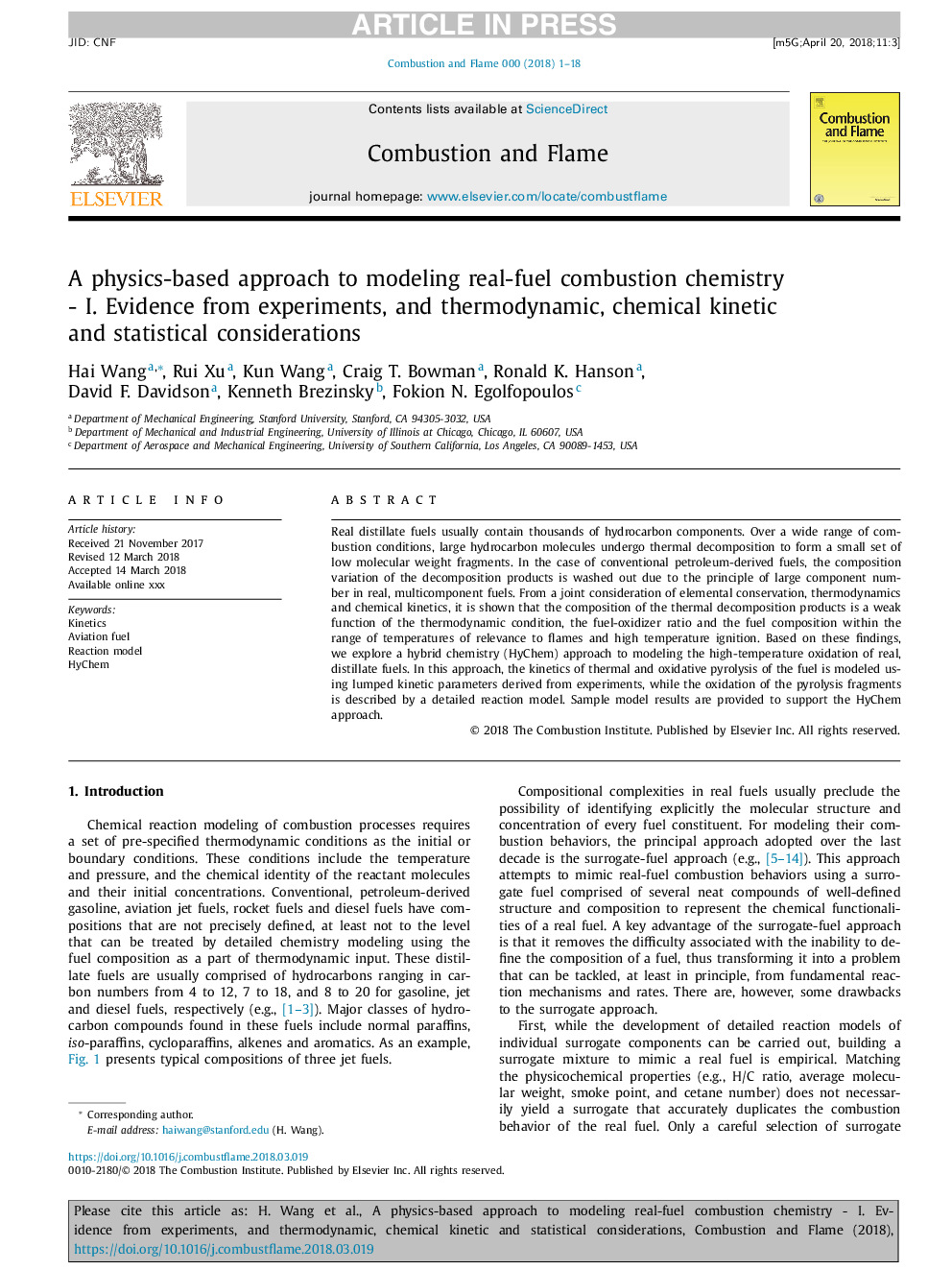| Article ID | Journal | Published Year | Pages | File Type |
|---|---|---|---|---|
| 6593621 | Combustion and Flame | 2018 | 18 Pages |
Abstract
Real distillate fuels usually contain thousands of hydrocarbon components. Over a wide range of combustion conditions, large hydrocarbon molecules undergo thermal decomposition to form a small set of low molecular weight fragments. In the case of conventional petroleum-derived fuels, the composition variation of the decomposition products is washed out due to the principle of large component number in real, multicomponent fuels. From a joint consideration of elemental conservation, thermodynamics and chemical kinetics, it is shown that the composition of the thermal decomposition products is a weak function of the thermodynamic condition, the fuel-oxidizer ratio and the fuel composition within the range of temperatures of relevance to flames and high temperature ignition. Based on these findings, we explore a hybrid chemistry (HyChem) approach to modeling the high-temperature oxidation of real, distillate fuels. In this approach, the kinetics of thermal and oxidative pyrolysis of the fuel is modeled using lumped kinetic parameters derived from experiments, while the oxidation of the pyrolysis fragments is described by a detailed reaction model. Sample model results are provided to support the HyChem approach.
Keywords
Related Topics
Physical Sciences and Engineering
Chemical Engineering
Chemical Engineering (General)
Authors
Wang Hai, Xu Rui, Wang Kun, Craig T. Bowman, Ronald K. Hanson, David F. Davidson, Kenneth Brezinsky, Fokion N. Egolfopoulos,
